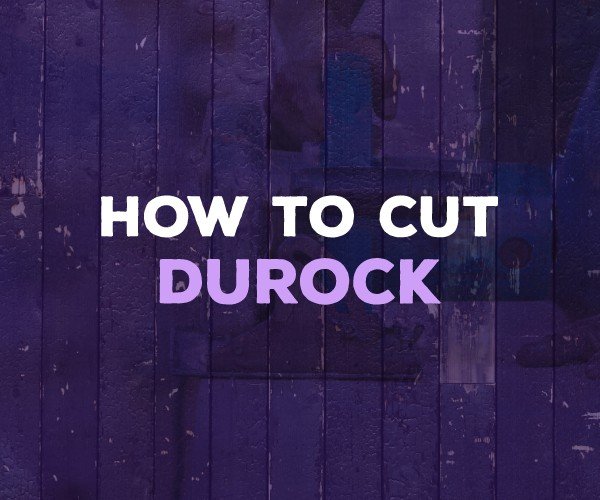Thanks to Durock, it’s easier than ever to achieve professional quality results on your next tiling project. But, at first look, learning how to cut Durock seems like a tall order. Fortunately, it’s easier to cut than you may think.
Follow the tips below, and you should be confident in tackling your next home improvement project.
What You’ll Need
When it comes to how to cut Durock, there are a few different ways you can get the job done. You can either attack it with power tools, or you can do it by hand. Both ways are fairly easy.
You’ll want to keep in mind that cutting Durock with a power saw will generate tons of dust, so you’ll want to go the old-fashioned route unless you have the proper equipment that can mitigate the dust.
Here’s what you’ll need to do the job by hand:
- Carbide-tipped scoring knife or a utility knife
- Tape measure
- Straight edge
- Coarse file
- Carpenter’s pencil
If you go the power tool route, here’s what you’ll need:
- Circular saw with a dust collector or a wet saw
- Sawhorses
- Tape measure
- Straight edge
- Carpenter’s pencil
- Respirator
- Safety goggles
Step I: Measuring & Marking the Durock
The first thing you’ll need to do is measure for your project, so you’ll know exactly where to cut.
Once you have your measurements, use a straight edge and carpenter’s pencil to mark the line on the back of the Durock. Now, you’re ready to begin cutting.
Step II: Cutting the Durock
This step will differ depending on whether you’re doing it by hand or using a saw for the job.
Using a Scoring Tool
If you go about the job by hand, you can use a carbide-tipped scoring blade to get the job done. They’re available for about $10, and it’s a good tool to have handy. Otherwise, a utility knife with a fresh blade will do the trick.
Place your straight edge down along the line you’ve just drawn with your pencil. Put your knee on top of the straight edge to keep it locked in place as you cut. Use your free hand to provide additional support at the opposite end of your straight edge.
Next, run the scoring tool or knife along the edge of your line. You’ll want to repeat this process several times so that your scored line is deep enough for you to break the board along the line.
Now, stand the board up on end, and place your knee against the Durock board on the outside of your scored line. Bend the board back against your knee, and it will snap along the line you’ve scored.
Use your scoring tool or knife to cut through the fiberglass mesh on the back of the board, which will separate the two pieces entirely.
This is going to leave you with a rough edge along where you’ve snapped the board. Run a coarse file along the edge a few times to achieve a nice smooth edge.
Using a Saw
Using a saw will produce a slightly more precise cut than breaking the board along a scored line will. However, using a saw will also generate tons of potentially harmful silica dust that you don’t want to be breathing in. So, this method is only recommended if you have proper tools, i.e., a circular saw with a dust collector, or a wet saw.
Even with the proper tools, you’ll want to make sure you’re wearing eye protection and a respirator to keep any residual dust from getting into your eyes or mouth.
Set the Durock board atop your sawhorses. Turn on your saw, and begin to saw through the board along the line you’ve marked with your carpenter pencil. Work slowly, and allow the saw to do all the work. It’s that simple. When you’re finished, you’ll be left with a nice clean edge that won’t require any additional finishing with a file.
Final Word
Now that you’ve finished this guide, you should have no problem learning how to cut Durock for your next tiling project.
Whether you go about it the old-fashioned way or use power tools, you can produce professional quality results with little effort.
I can’t overstate this point enough: only use a saw if you have the proper saw for the job that can reduce or eliminate the silica dust that will be generated as you cut. This stuff is a known irritant, and it’s not something you want getting into your eyes or mouth.
If you don’t have the right tools for the job, just opt for a scoring tool, and you won’t have to concern yourself with dust collectors, respirators, or any of that stuff.

